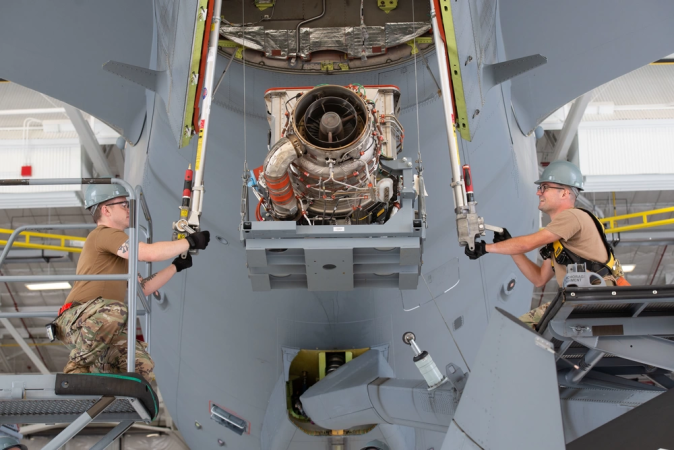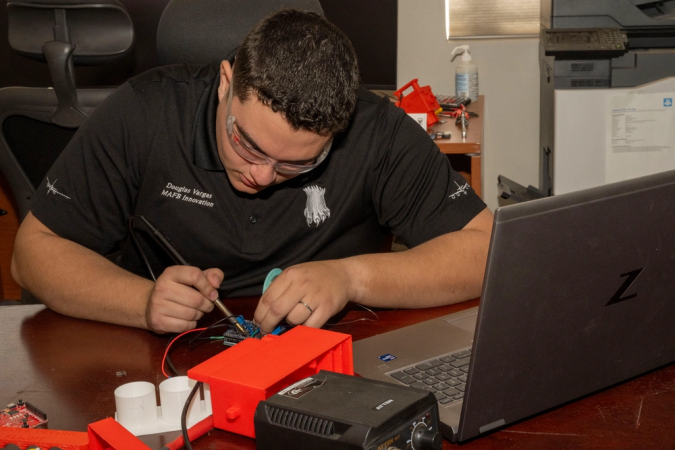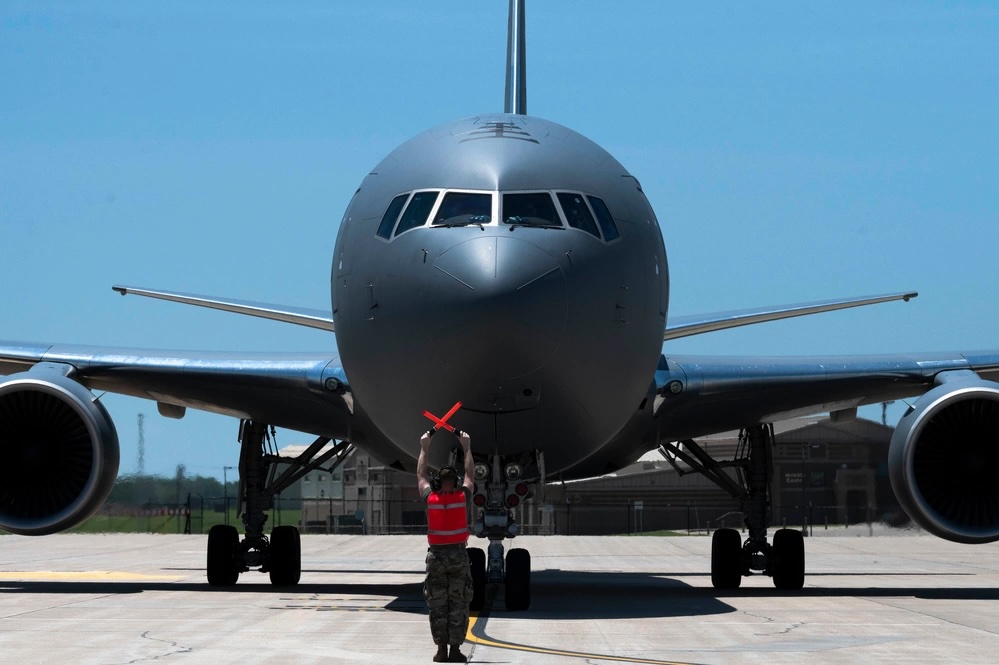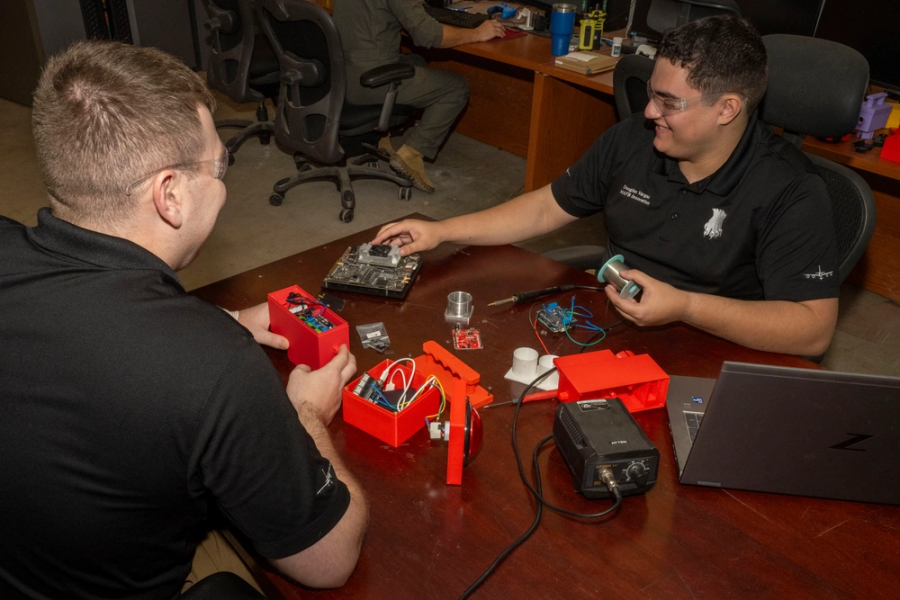Airmen at McConnell Air Force Base, Kan., are working on a device that will start up the KC-46 refueling tanker faster and cut down the time it takes for crews to take off and gas up aircraft in need.
First delivered in 2019, the KC-46 is the Air Force’s newest tanker. But despite its youth, the two-engine aircraft takes much longer to start up than its four-engine cousin, the KC-135, which is about 61 years old on average.
The difference is the auxiliary power unit (APU), a smaller engine that helps start up the main engines. APUs also get the aircraft’s climate control and other systems running, and they can be used as an emergency power source to restart the engines in flight. The APU on the KC-46 has “a substantially slower start/initialization time” than the one on the KC-135, John Van Winkle, chief of public affairs at McConnell’s 22nd Air Refueling Wing, told Air & Space Forces Magazine.
“This means that the crews have to start the APU when arriving at the aircraft and wait for it to run its initialization and diagnostics prior to applying battery power or attempting to start the aircraft engines,” he said.

Winkle could not share exact times due to security concerns, but the wait was long enough that two Airmen at McConnell wanted to do something about it. Staff Sgt. Hunter Diedrich and Senior Airman Douglas Vargas are part of the 22nd Air Refueling Wing’s Innovation Lab, a space for Airmen to whip up fixes and inventions.
Diedrich and Vargas invented the APU Remote Start System (APURSS), a device that physically presses the APU start button remotely before the crews get aboard the KC-46. Vargas worked out the device’s software while Diedrich handled its physical design.
“We were relieved when the APURSS worked the first time because we had a few unknowns if the actuator would be strong enough to press the button and if the unit was going to be able to stay on the aircraft,” Diedrich said in a Nov. 19 press release.
The prototype is already making an impact, Capt. Timothy Schwanke, chief of the Innovation Lab, said in the release.
“This has already proven to significantly reduce the alert time for the KC-46 crews as they are conducting routine training,” he said. “Prior to this, the KC-46 had a severe disadvantage to alert timing in comparison to its KC-135 Stratotanker counterpart, and the APURSS device has effectively reversed those statistics.”

The signal is so strong that crews can trigger the APURSS from several states away, Diedrich said, though Van Winkle clarified that the intent is for the control module to stay at the same base as the APURSS. McConnell continues to use APURSS in operational exercises, “but it is anticipated that all KC-46 units will want this device once it is developed at a larger scale,” Schwanke said.
For now, the device is still the early stages of prototyping and creating proof of concept for the Air Force, but the Innovation Lab has already partnered with a few organizations to develop the idea.
Those partners include FirePoint Innovations Center, a defense technology hub at nearby Wichita State University, and the Defense Innovation Unit, which secured $250,000 to research and develop APURSS. FirePoint and Innovation Lab are also working with a Wichita company called PWI, which will take the lead on research and development, prototyping and commercialization of APURSS for the entire KC-46 fleet. How long that will take is not yet clear.
“It really will depend on when the funding officially comes in from DIU and how fast PWI can design and build a product for us to use on a larger, more robust scale,” Van Winkle explained. “Higher headquarters will be the ultimate authority on if and when the APURSS will actually be utilized real world.”
In the meantime, the partnerships are a promising start.
“We hope that with this funding from DIU, and business partnership with PWI, we can build a suitable product that the Air Force will want to purchase for fleet-wide implementation,” Van Winkle said.


